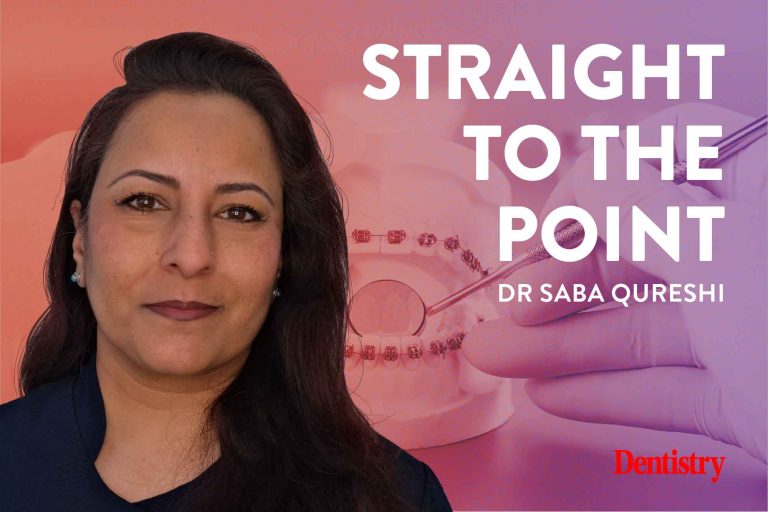This month, Saba Qureshi discusses how orthodontic treatment can be different for adult patients and everything they need to know before starting treatment.
Is age more than just a number when it comes to orthodontic patients?
While some may still consider braces to be for children, adult patients are increasingly embracing orthodontics to gain confidence in their smiles and facilitate cosmetic dental work.
But is there a difference between the duration of treatment in younger and older patients? Let’s find out.
Tooth movement
Orthodontic appliances are used to apply forces to the teeth, which in turn stress the periodontal ligament, causing bone remodeling through an aseptic inflammatory response. This results in the teeth moving.
When light forces are applied, frontal resorption takes place in the direction of tooth movement. Osteoclastic activity results in the resorption of bone where there is stress and new bone is laid down in areas of stress through the stimulation of osteoblasts. This is considered the ideal type of movement as it causes less discomfort and less damage to the periodontium.
If excessive forces are applied, however, a process called absorption undermining occurs. In this case the periodontal ligament is compressed to such an extent that the blood supply is cut off, creating a cell-free zone without vessels.
This is called vitrification and causes the teeth to stop moving temporarily. This vitreous area must be removed by periodontal ligament regeneration before tooth movement can resume and is associated with greater levels of pain.
Clinically, it is virtually impossible to completely prevent blood vessel occlusion, so there is always some degree of vitrification. This means that the tooth appears as a result of a combination of undermining and frontal resorption.
Age-related changes
It has been suggested that orthodontic tooth movement is slower in adults as a result of reduced cellular activity and alveolar vascularity, altered bone composition, and richer tissue collagen. This, of course, would mean that orthodontic procedures would take longer in adult patients.
But what does science say?
Studies have shown that while there are similar responses to the application of an orthodontic force in both young and adult subjects (in this case rats), faster osteoclast recruitment occurs in younger subjects. Thus, it appears that the alveolar bone of young rats was more sensitive and active in response to mechanical stimuli, resulting in faster and dynamic bone remodeling.
Additionally, it was noted that in younger individuals there was an increase in its expression the receptor activator of nuclear factor-κB ligand (RANKL) and osteoprotegerin (OPG) in stress. This allowed for a more dynamic balance of bone resorption remodeling compared to adults, who only showed an increase in RANKL expression.
Studies conducted in adult and early adolescent patients report that although cytokine and osteoclast markers were significantly increased in both age groups, the increases were greater in adults than in adolescents.
Interestingly, the rate of tooth movement in adults was significantly slower than in adolescents during the study period. Adults also reported significantly more discomfort and pain.
It has also been shown that the number of osteoblasts decreases with age, leading to an imbalance of bone deposition and resorption.
Medicines that affect tooth movement
Adult patients may also present with more complex medical histories than their younger counterparts, and certain medications are well known to reduce the rate of orthodontic tooth movement…
Non-steroidal anti-inflammatory drugs (NSAIDs): Often used to relieve pain, they inhibit the inflammatory reaction produced by prostaglandins, thus slowing tooth movement.
Aspirin: Treatment with salicylates reduces bone resorption by inhibiting prostaglandin synthesis.
Fluorine: It increases bone mass and mineral density, often used to treat metabolic bone diseases such as osteoporosis. Sodium fluoride inhibits osteoclastic activity and the number of active osteoclasts.
Bisphosphonates: It is used in patients with osteoporosis and bone cancer to limit bone loss, reduce osteoclastic activity, and has been shown to inhibit tooth movement and delay orthodontic treatment.
This highlights the importance of an up-to-date medical history for all of our patients, as they are often unaware of the impact that medications may have on their orthodontic treatment. Patients will not share this information unless asked.
hormones
Estrogens: This has been shown to reduce the speed of tooth movement by inhibiting the production of various cytokines involved in bone resorption and the response of osteoblasts.
Calcitonin: It inhibits bone resorption by direct action on osteoclasts. It is often prescribed for postmenopausal osteoporosis.
Corticosteroids: They directly inhibit osteoblastic function, thus reducing overall bone formation.
Interleukin inhibitors: These are used to regulate the immune system for conditions such as rheumatoid arthritis, multiple sclerosis, asthma, Crohn’s disease and ulcerative colitis. They affect the inflammatory response, reducing the rate of tooth movement and bone remodeling.
So, in summary, all the evidence suggests that adult patients should expect a longer duration of treatment and be informed about it before starting treatment. Ultimately, managing treatment expectations helps keep both us and our patients happy.
Catch up on past Straight to the Point columns:
Follow Dentistry.co.uk on Instagram to keep up with all the latest dental news and trends.

